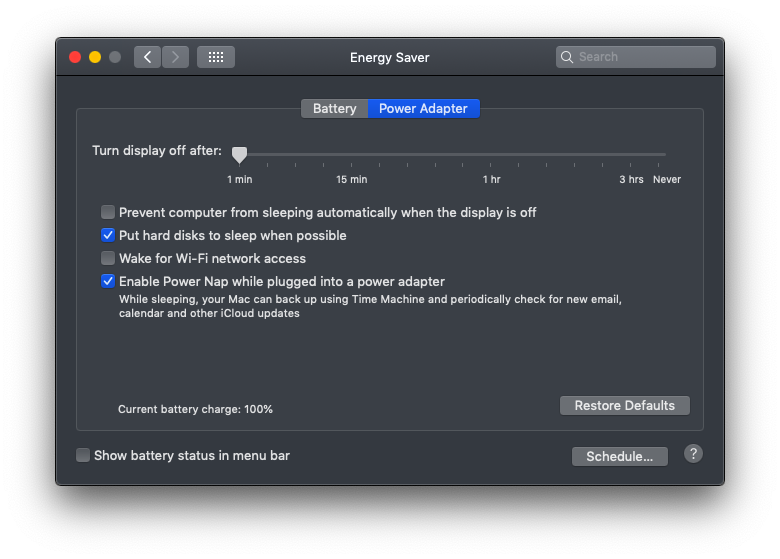Category filter
How to configure Energy Saver settings on macOS devices?
Energy Saver settings on macOS devices help users to manage power usage and optimize battery efficiency. These settings help to customize the Mac behavior to conserve energy and extend battery life. You can configure energy settings for your macOS devices, adjusting them separately for laptop on AC and battery power, as well as for macOS desktop systems. With Hexnode’s Energy Saver policy, IT admins can configure settings to regulate power consumption and optimize battery performance for macOS devices.
Configure Energy Saver settings for macOS devices
Follow the below steps to configure Energy Saver settings,
- Login to your Hexnode UEM portal.
- Go to Policies > New Policy. Assign a suitable name and description (optional) for the policy. Alternatively, you can also choose to continue with an existing policy.
- Select macOS > Configurations > Energy Saver. Click Configure.
Desktop
Settings Description Automatically startup on power loss Check this option for the devices to restart automatically if there is a power failure. Idle timeout for system sleep Specify the duration of inactivity (in minutes, ranging from 0 to 180) for the device drivers and system to sleep instead of only display. Idle timeout for display sleep Specify the duration of inactivity (in minutes, ranging from 0 to 180) for the device display to enter sleep mode. Wake for network access Check this option to wake your Mac to provide access to shared resources, such as shared printers or Music playlists even in sleep mode. Laptop on AC Power
Settings Description Automatically startup on power loss Check this option for the devices to restart automatically if there is a power failure when the device is charging. Idle timeout for system sleep Specify the duration of inactivity (in minutes, ranging from 0 to 180) for the device drivers and system to sleep instead of only display. Idle timeout for display sleep Specify the duration of inactivity (in minutes, ranging from 0 to 180) for the device display to enter sleep mode. Wake for network access Check this option to wake your Mac to provide access to shared resources, such as shared printers or Music playlists even in sleep mode. Laptop on Battery Power
Settings Description Automatically startup on power loss Check this option for the devices to restart automatically if there is a power failure when the device is on battery. Idle timeout for system sleep Specify the duration of inactivity (in minutes, ranging from 0 to 180) for the device drivers and system to sleep instead of only display. Idle timeout for display sleep Specify the duration of inactivity (in minutes, ranging from 0 to 180) for the device display to enter sleep mode.
Wake for network access Check this option to wake your Mac to provide access to shared resources, such as shared printers or Music playlists even in sleep mode. General Settings
Settings Description Prevent FileVault key storage during standby Enable this option on devices with FileVault enabled to prevent storing a temporary FileVault key in the SMC or RAM when the device is on standby. Disable device sleep Check this option to prevent the device from going to sleep. - Click Save.
Associate the Energy Saver policy with macOS devices
If the policy has not been saved,
- Navigate to Policy Targets > +Add Devices.
- Choose the target devices and click Ok. Click Save.
- You can also choose to associate the policy with device groups, users, user groups, or domains from the left pane of the Policy Targets tab.
If the policy has been saved,
- Go to the Policies tab and choose the desired policy.
- Click on the Manage drop-down and select Associate Targets.
- Choose the target entities and click Associate.
What happens at the device end?
After associating the Energy Saver policy, the settings will be changed for the macOS device when it is using battery power.
For macOS devices 13.6 and above, the changes can be viewed from System Settings > Lock Screen & System Settings > Battery > Options.
For macOS devices 12.6, the changes can be viewed from System Preferences > Battery.
For macOS devices 10.7 to 11.7, the changes can be viewed from System Preferences > Energy Saver.

See also:
Configuration profile for energy saver settings on Mac with configuration profiles




